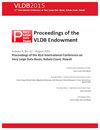MINT:从时间序列关系数据中检测欺诈行为
IF 3.3
3区 计算机科学
Q2 COMPUTER SCIENCE, INFORMATION SYSTEMS
引用次数: 0
摘要
像Shopee这样的电子商务平台积累了大量的时间序列关系数据,这些数据包含了区分欺诈用户和良性用户的有用信息。现有的欺诈行为检测方法通常使用普通的递归神经网络(RNN)对时间序列数据进行建模,或者将整个序列合并为单个意图,而不考虑时间行为模式、行级交互和不同视图意图。在本文中,我们提出了MINT,一个多视图行- In交互式时间感知框架,用于从时间序列结构化数据中检测欺诈行为。MINT的关键思想是为每个用户的时间序列关系数据构建一个时间感知行为图,其中每行表示为一个动作节点。我们利用用户的时间信息构建了三种不同的图卷积矩阵,从不同的角度分层学习用户的意图,即短期、中期和长期意图。为了捕获更有意义的行级交互并缓解时间感知行为图中的过度平滑问题,我们提出了一种新的门控邻居交互机制来校准每个动作节点的聚合信息。由于三个图卷积层的接受域被设计成几乎呈指数增长,我们的MINT比传统的深度图神经网络(gnn)需要更少的层来捕获多跳相邻信息,并且避免了循环前馈传播,从而提高了训练效率和可扩展性。我们对Shopee的大型电子商务数据集(多达46亿条记录)和亚马逊的公共数据集进行了广泛的实验,结果表明MINT在10个最先进的模型中取得了卓越的性能,并提供了更好的可解释性和可扩展性。本文章由计算机程序翻译,如有差异,请以英文原文为准。
MINT: Detecting Fraudulent Behaviors from Time-Series Relational Data
The e-commerce platforms, such as Shopee, have accumulated a huge volume of time-series relational data, which contains useful information on differentiating fraud users from benign users. Existing fraud behavior detection approaches typically model the time-series data with a vanilla Recurrent Neural Network (RNN) or combine the whole sequence as a single intention without considering the temporal behavioral patterns, row-level interactions, and different view intentions. In this paper, we present MINT, a M ultiview row- IN teractive T ime-aware framework to detect fraudulent behaviors from time-series structured data. The key idea of MINT is to build a time-aware behavior graph for each user's time-series relational data with each row represented as an action node. We utilize the user's temporal information to construct three different graph convolutional matrices for hierarchically learning the user's intentions from different views, that is, short-term, medium-term, and long-term intentions. To capture more meaningful row-level interactions and alleviate the over-smoothing issue in a vanilla time-aware behavior graph, we propose a novel gated neighbor interaction mechanism to calibrate the aggregated information by each action node. Since the receptive fields of the three graph convolutional layers are designed to grow nearly exponentially, our MINT requires many fewer layers than traditional deep graph neural networks (GNNs) to capture multi-hop neighboring information, and avoids recurrent feedforward propagation, thus leading to higher training efficiency and scalability. Our extensive experiments on the large-scale e-commerce datasets from Shopee with up to 4.6 billion records and a public dataset from Amazon show that MINT achieves superior performance over 10 state-of-the-art models and provides better interpretability and scalability.
求助全文
通过发布文献求助,成功后即可免费获取论文全文。
去求助
来源期刊

Proceedings of the Vldb Endowment
Computer Science-General Computer Science
CiteScore
7.70
自引率
0.00%
发文量
95
期刊介绍:
The Proceedings of the VLDB (PVLDB) welcomes original research papers on a broad range of research topics related to all aspects of data management, where systems issues play a significant role, such as data management system technology and information management infrastructures, including their very large scale of experimentation, novel architectures, and demanding applications as well as their underpinning theory. The scope of a submission for PVLDB is also described by the subject areas given below. Moreover, the scope of PVLDB is restricted to scientific areas that are covered by the combined expertise on the submission’s topic of the journal’s editorial board. Finally, the submission’s contributions should build on work already published in data management outlets, e.g., PVLDB, VLDBJ, ACM SIGMOD, IEEE ICDE, EDBT, ACM TODS, IEEE TKDE, and go beyond a syntactic citation.
 求助内容:
求助内容: 应助结果提醒方式:
应助结果提醒方式:


